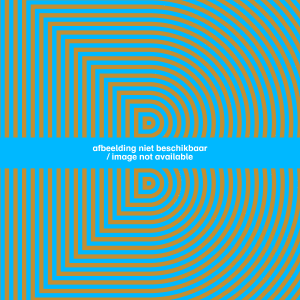The years 1930-1932 were a turning point in Ouborg’s work. During leave in the Netherlands from his teaching post in Batavia (now Jakarta, Indonesia) he came into contact with the avant-garde. This brought about a change in his work: he created dreamlike, Surrealist paintings and a series of ‘automatic’ drawings, made in an unconscious state., The years 1930-1932 were a turning point in Piet Ouborg’s development. During a vacation in the Netherlands from his teaching post in Batavia (now Jakarta) he had his first encounter with modern art. This brought about a change in his work: he began making dreamlike, Surrealist paintings and a series of ‘automatic’ drawings, made in an unconscious state.

Specifications
| Title | Opening Silence |
|---|---|
| Material and technique | Oil on hardboard |
| Object type |
Painting
> Painting
> Two-dimensional object
> Art object
|
| Location | This object is in storage |
| Dimensions |
Height 27,5 cm Width 33 cm |
|---|---|
| Artists |
Artist:
Piet Ouborg
|
| Accession number | 3579 (MK) |
| Credits | Purchased with funds from the estate of Mrs N.C. van Riemsdijk-Borsje, 2007 |
| Department | Modern Art |
| Acquisition date | 2007 |
| Creation date | in 1931 |
| Provenance | Johannes and Cricri Tielrooy, Amsterdam; on loan to the Dordrechts Museum 1985-2007; Christie’s Amsterdam, 4 December 2007, lot. 106 |
| Exhibitions | Haarlem 1931; The Hague 1953; Eindhoven 1965; Breda 1965; Enschede 1990; Dordrecht 1993-94 |
| Internal exhibitions |
The Collection Enriched (2011) De collectie als tijdmachine (2017) |
| External exhibitions |
Surrealist Art - Masterpieces from Museum Boijmans Van Beuningen (2021) Only the Marvelous is Beautiful (2022) A Surreal Shock. Masterpieces from Museum Boijmans Van Beuningen (2023) Dalí, Magritte, Man Ray and Surrealism. Highlights from Museum Boijmans Van Beuningen (2023) A Surreal Shock – Masterpieces from Museum Boijmans Van Beuningen (2021) |
| Research |
Show research A dream collection - Surrealism in Museum Boijmans Van Beuningen |
| Literature | Enschede 1990, p. 107; Eindhoven 1965, unpaged, cat. no. 14 |
| Material | |
| Object |
Entry catalogue A dream collection - Surrealism in Museum Boijmans Van Beuningen
Author: Marijke Peyser
The period spanning 1930 and 1932 was a watershed in the work of the Dutch artist Piet Ouborg. While on leave in the Netherlands from the Dutch East Indies he saw contemporary modern art. As a result he began to make dreamy, surrealistic paintings, and automatism made its appearance in his drawings. The painting Opengaande stilte can be regarded as one of these early ‘abstract’ surrealistic works that are characteristic of his style in the early 1930s. Stimulated by external influences and drawing on his own experiences the artist developed a Surrealist style in which he tried to express his representation of the ‘other’ reality. The ‘other side of reality’ consisted of experiences where dreams and reality run into one another. At such times images and moods appear like scenes from a dream. Ouborg spoke of ‘visions’: images of great intensity that were also frightening because they had the power to draw him into another world. Once in this world, which was more real than reality, there was no possibility of being able to return.[1]
Ouborg’s work in this period chimes perfectly with André Breton’s definition of Surrealism: ‘I believe in the future resolution of these two seemingly so conflicting states, dream and reality, in to a kind of absolute reality, into a Surreality.’[2] The depiction of reality was too restrictive for Ouborg, too. In 1933, for example, he wrote: ‘Anyone who knows homesickness for the heart of things, which always hides behind appearances, followed different paths from the ones the senses point to’.[3]
In 1931 Ouborg’s earliest surrealistic paintings were shown in the J.H. de Bois gallery in Haarlem. It was a series of ten ‘abstract’ dream images that the artist had painted between around 1930 and 1931. It was his first solo exhibition in the Netherlands.[4] Most of the canvases shown, including Opengaande stilte, suggested an infinite space. This effect is the result of a dichotomy between fields where the bottom-most is darker in tone and is reminiscent of a large body of water. Abstract shapes float in it. The exhibition had little success. De Bois had warned Ouborg when he brought his canvases that he had little hope of selling anything: ‘they will only buy that in thirty years’ time’.[5] Jan Voskuil, art critic of the Haarlemsche Courant, was the only one who wrote a positive review. His reaction to Ouborg’s exhibited work was that ‘Ouborg is an odd character and in our provincial environment he seems to be ten times odder… If we were to meet him in Paris, among his kindred spirits the Surrealists, the form of his art would raise far fewer eyebrows’.[6]
Footnotes
[1] Enschede 1990, p. 30.
[2] André Breton, ‘Manifeste du surréalisme’ (1924), in Breton 1955, p. 15. See also Breton 1988, p. 319.
[3] Enschede 1990, p. 36: quote from Ouborg’s ‘Inleiding tot de catalogus van de tentoonstelling van den kunstschilder P. Ouborg’, in Ouborg, exh. cat. Batavia (Kunstzaal Kolff en Co.), 1933.
[4] Amstelveen 2009, p. 4.
[5] Ibid.
[6] Voskuil 1932, in Enschede 1990, p. 30.

























